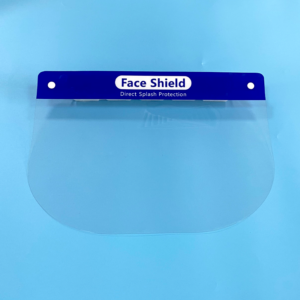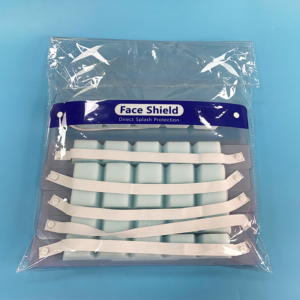Face shields are essential protective gear, especially in environments where individuals are exposed to splashes of liquid or other harmful substances. These shields are primarily made of polymers, with common choices being polycarbonate or polyethylene terephthalate (PET), which offer a balance between lightweight construction and rugged durability. However, understanding the subtle differences between these materials is critical to optimizing performance and longevity.
Both polycarbonate and PET plastic masks have commendable qualities, including the ability to absorb liquid splashes, often up to 1.2 times their weight. This feature enhances their effectiveness in protecting individuals from potential dangers. However, they are susceptible to corrosion and cannot withstand higher pressures (such as sprinkler head pressure), so they need to be replaced regularly to maintain optimal performance levels.
For individuals who prioritize corrosion resistance and long-term usability, PET plastic splash shields become an attractive solution. Made from a special rubber, these shields have a higher resistance to pressure, ensuring long-term protection without compromising on durability. While these shields may cost more initially, their long service life justifies the investment, making them a prudent choice for long-term use.
Although splash masks offer many advantages, the durability of these masks depends largely on the quality of the materials used in their construction. While premium options may come with a higher price tag, budget-friendly alternatives exist without compromising on levels of protection. Investing in a mask that can withstand minor liquid splashes, such as the anti-splash variant, allows users to strike a balance between affordability and functionality, ensuring adequate protection without breaking the bank.
Additionally, the effectiveness of a splash mask depends on the quality of its construction, particularly the integrity of the rubber edges. Poor edge construction can compromise the shield’s ability to provide a safe barrier against liquid splashes, highlighting the importance of choosing well-crafted shields that are crafted with meticulous attention to detail and quality assurance. When YJC Polymer produces this mask, it pays attention to the process and carefully designs the edge structure to ensure the effectiveness of this mask.

In some cases, choosing a cost-effective alternative, such as a polycarbonate splash guard equipped with mylar rather than rubber edges, can provide a comparable level of protection. This strategic decision allows users to cope with budget constraints without compromising safety, emphasizing the versatility and adaptability of the face mask options available on the market.
In summary, choosing a face mask requires careful consideration of various factors, including protective effectiveness, durability, and affordability. PET plastic face shields, especially the splash-proof variant, represent a viable compromise, offering adequate protection while catering to different budget considerations. By understanding the subtle differences between materials and designs, individuals can make informed choices to ensure optimal safety in their respective environments.